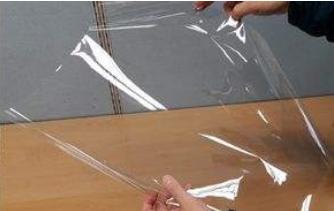
The traditional PI film has low transmittance, brown-yellow, and poor optical properties. At present, with the rapid development of optoelectronic communication field, optoelectronic packaging materials, photovoltaic materials, optical waveguide materials, and alignment film materials in the field of liquid crystal display are in urgent need of thin-film materials with good optical properties, low dielectric constant, good thermal stability, and excellent mechanical properties. Transparent PI films emerge as the times require. Transparent PI films can be divided into two categories: fluorinated aromatic pi films and transparent PI films
Alicyclic PI films. The application demand for transparent PI films began in the optoelectronic industry. Traditional organic polymer materials for optical devices, such as polymethylmethacrylate (PMMA), polystyrene (PS) and polycarbonate (PC), have excellent light transmittance in the visible light wavelength range. However, the temperature resistance of these materials is poor, which can not be used in some flexible circuit boards with special requirements. Therefore, polyimide (PI) should be the first choice among the available materials. Colorless transparent PI film (CPI) is a new type of PI film modified on the traditional PI recently. Due to the breakthrough in optical properties and its superior comprehensive performance, CPI is a new type of PI film It has been widely used in microelectronics and optoelectronic information fields, such as photoelectric conversion materials, flexible substrates, alignment films of liquid crystal display panels, second-order nonlinear optical materials, sensors and so on. In recent years, China has begun to pursue advanced countries in the electronic industry such as the United States and Japan in this field and has made important breakthroughs in the flexible display screen. For example, BOE, Xiaomi, and other companies have launched flexible LCD screens around 2018.
In the field of aerospace, China has begun to attach importance to the research on the imaging system of a large aperture telescope. However, due to the limitation of glass lens manufacturing technology, it is difficult to make a breakthrough in the whole large-diameter glass lens. Therefore, researchers are looking for a new idea: to assemble several small lenses and use the principle of diffraction imaging to replace the large-diameter glass lens to realize its function, which is represented by Fresnel Or the diffractive lens is fabricated by photolithography on the whole large diameter polymer film. Moreover, due to the good thermal stability and mechanical properties of PI film, as a polymer material, it has good extensibility and controllability, so it is very difficult to make a diffractive imaging lens. Therefore, it is urgent to develop an optical grade transparent PI film. Colorless transparent PI film (CPI) is a kind of colorless transparent PI film, which is widely used in high-tech fields such as microelectronics and optoelectronics. For example, they are used as optical waveguide materials, optoelectronic packaging materials, second-order nonlinear optical materials, photorefractive materials, photosensitive materials, and photoelectric materials in the field of optical communication. In the field of liquid crystal display, it is used as orientation film material, negative compensation film, and so on. The introduction of fluorine-containing substituents into pi molecular structure is the most successful modification method at present. The commercial production of CPI films benefits from the development of flexible optoelectronic industry, such as flexible light-emitting diodes, flexible solar cells, flexible thin-film transistors and so on
Therefore, the researchers are looking for the possibility of improving the performance of the noncommercialized polymer materials. At present, the application of CPI film has been found in many optoelectronic devices, such as FPCB, flexible display, touch screen, thin-film photovoltaic cell, etc. PI thin film substrate with optical transparency and high-temperature resistance has great potential application value in these fields due to its nonfragile and expensive glass analog flexibility, portability, cost-effectiveness, and processability.http://www.china-polyimide.com
